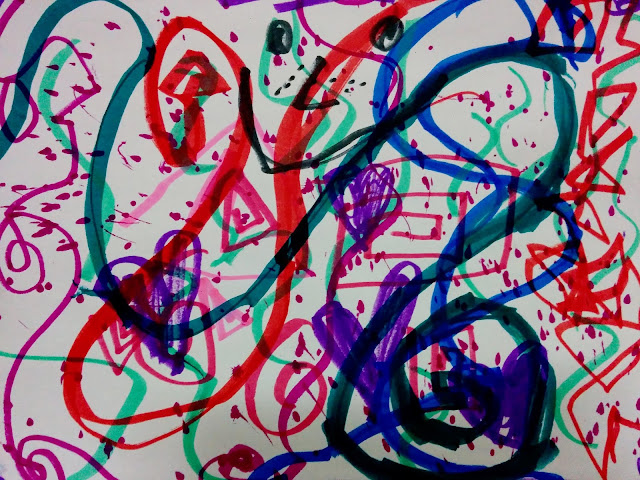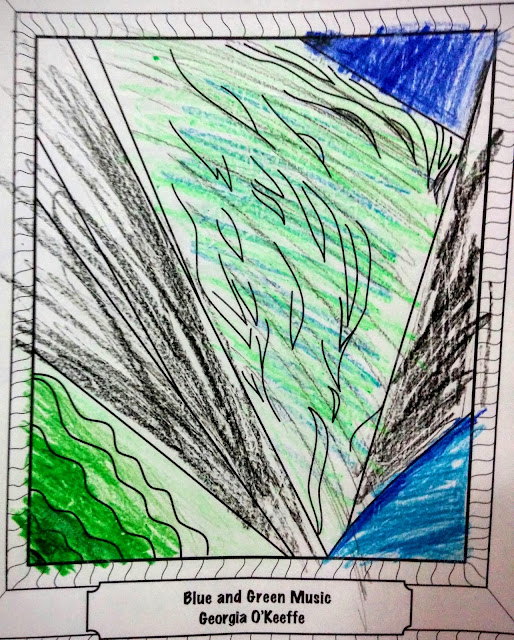A few weeks ago, I shared a little bit about my new role as a teacher-mentor under Project-Based Homeschooling. This week, I wanted to share how we have started incorporating basic goal-setting skills into our PBH journey.
Ideally, I would like to get to the point where the sprouts are able to set Specific, Measurable, Attainable, Relevant, and Timely goals-- usually abbreviated to SMART goals-- and be able to make a plan to reach them. However, I think that some of those concepts would be pretty abstract for my learners at their ages and experience levels. So, I have been trying approach their goal setting a little bit differently.
We have started discussing project goals at each of our monthly conferences. Once the sprouts give me a goal, such as building or sewing, we then talk about the steps we need to accomplish the goal. Usually, we generate a list of 3-5 specific actions that will help accomplish the goal. For example, when Second Sprout set her building goal, we felt that looking at library books, saving recyclable materials, and buying some new tools would help her reach that goal. At first, I would offer suggestions on possible steps, but I am gradually trying to step back from that and let the sprouts plan the steps themselves.
By the time we had our second round of conferences in November, the sprouts had a better idea of what to expect. Both of the older sprouts had a goal and some of their steps ready to go for our discussion. Second Sprout was interested in building with milk jugs, while First Sprout wanted to switch gears and study cats instead. However, I added a new component to their goal setting for these conferences-- they had to come up with an idea for sharing what they are learning. Second Sprout immediately suggested making a book of her creations, while First Sprout took much more conversation and thought to reach an idea. She eventually decided that she was interested in planning and hosting an art show of cat-themed works.
Now, I have to say that these goals sound incredibly awesome, but neither of the sprouts have followed through as of yet. Most of their Project Time has been spent on other pursuits, which is really crucial to their process of becoming self-directed learners. It's entirely possible that they will end up switching goals again at our next round of conferences. Practice is the key here.
And goodness knows that I haven't reached (or even started) all of the goals I ever set for myself.
I don't want everyone to think that we have perfected anything here. Rather, I want to share what we're doing and how it's going in case our experience might be useful to others. So, I'm okay if they don't start hitting their goals right off the bat. For me, it's all part of the process.
One thing I CAN do as they practice is model my own goal-setting skills. Currently, I have two projects going. One is Project-Based Homeschooling itself, as I try to navigate this new routine, conduct my research, and practice new skills. While I do (try to) make a habit of sharing this journey on the blog, it's maybe still a bit abstract for demonstrating the whole goal-setting process to the sprouts. So I created a second project for myself-- learning to crochet-- and set goals as well as steps I needed to get there. The sprouts got to see me skimming books and watching videos and creating samplers. They got to see my pull out stitches and puzzle over patterns and get impatient over interruptions. To be honest, I think they have been prouder of my accomplishments than even I am. They are rather fond of telling everyone they meet that "Mom is learning how to crochet-- she made that scarf all by herself!" I plan to keep working on my crochet and setting new goals for myself to keep this momentum going.
For the foreseeable future, I plan to continue working on our goal-setting skills in our conferences and through modeling the process. While we are not at the point of following through on independently-created SMART goals, we are practicing and learning a lot in the process.
Until next time,









































